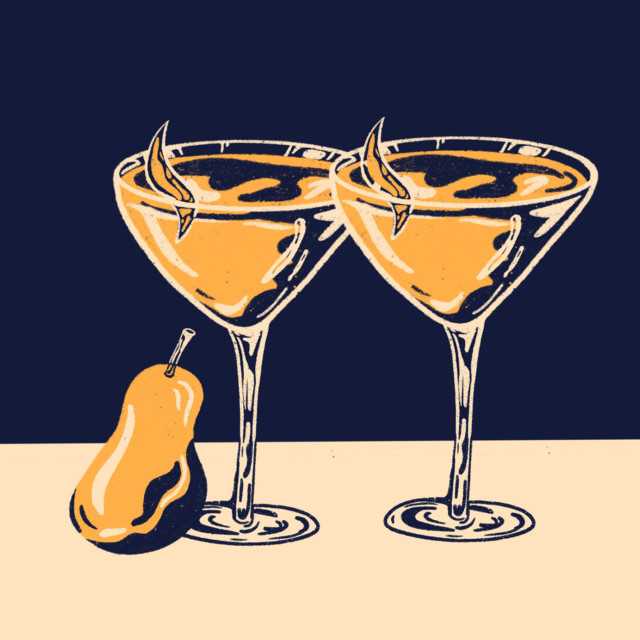Dave Kaplan has been in a committed relationship with the Martini for 15 years. Martini variations are “the first thing I look for when I go into a bar,” the co-founder of Death & Co. says. “If I don’t see one, I’ll ask them to make their house-spec Martini.”
Few cocktails inspire such devout loyalty among drinkers, and Kaplan is not alone in letting the Martini be his guiding star when bellying up to a new bar (take it from this fellow disciple). Yet such is the allure and iconicism of the Martini.
Of course, this approach arrives with limitations. In the pursuit of achieving absolute individualism, proprietary Martini variations can fall foul of including one or two too many ingredients, which sees the soul of the drink lost in the process. And while house-spec Martinis teach us much about bars and those leading their programs, 15 years is a long time to continue sampling subtle differences in varying quantities of gin and vermouth.
For those who find themselves in such a predicament — searching for a new take on the Martini that also doesn’t stray too far from the beaten path — Kaplan offers a simple, yet profoundly effective hack: including a small amount of brandy in the recipe.
In recent years, as wetter Martini ratios have become decidedly à la mode, bartenders have focused on vermouth alternatives, with sherry proving to be a popular substitution. Kaplan’s approach instead sees a small quantity of gin replaced by fruit distillate, specifically unaged eau de vie.
“Once you break that idea of the ‘pedestal’ of the Martini — which is funny to say, but I do think we still hold it in really high regard — these more creative, delicate, nuanced modifiers bring a lot to the party, and can be a ton of fun,” he says.
The world of eaux de vie can be a dizzying landscape. Any ingredient that contains natural sugar can be fermented into alcohol, and therefore becomes a candidate for distillation. This is why specialist spirits stores might carry an apricot based eau de vie alongside one made from carrots.
For his Martini variation, Kaplan opts for unaged pear brandy. “When you sip it, great pear brandy is a very, very dry spirit,” he says. “But it still somehow tastes like you’re biting into a pear, with all of the aromatics from the skin to the ‘meat’ of the fruit.”
Given the intensity of flavors captured by distillers, and the aim of creating a Martini variation rather than a Peartini, Kaplan opts for a scant quarter-ounce of brandy in his riff. And because of the dryness of the spirit, he tweaks the supporting cast to include both dry and blanc vermouth, the subtle sweetness of the latter balancing the exceedingly crisp pear eau de vie. All things told, his recipe includes 2 and a quarter ounces London Dry gin, one-quarter ounce pear brandy, one-quarter ounce dry vermouth, and one-quarter ounce blanc vermouth. Based on his classic Martini preferences, Kaplan also adds a few dashes of orange bitters and garnishes with a lemon twist.
Just as the Martini itself can be viewed more as a formula than a set-in-stone recipe, so too can Kaplan’s variation. Including fruit brandy opens the door to new garnishes, from simple slices of pear to a single star anise. Before you begin to explore the expansive world of other eaux de vie to deploy in place of pear brandy, you can also consider the spirit in its aged form.
“Calvados and aged brandy is really fun to play with as well,” Kaplan says. “You can argue that you’re moving further away from a Martini, but who really cares about that if you’re making a great drink?”
While Calvados is typically thought of as an apple-based aged brandy, many producers in its homeland of Normandy, France, use a high proportion of pear in their recipes, and often barrel-age the cider prior to distillation. During the aging process, these spirits develop characteristics that give an impression of sweetness, even if they technically taste dry and crisp. Kaplan therefore returns to a half-ounce of dry vermouth and omits the blanc when including Calvados or other aged brandies.
Beyond offering a noticeably perfumed and subtly fruity twist on the Martini, his technique arrives with multiple benefits.
Unlike opting for sherry in place of vermouth, or seeking a distinctive, left-field aromatized wine to shake up your Martini, eau de vie is not a ticking time bomb whose quality begins to diminish from the moment it’s opened. Pick up a half-bottle of pear brandy from a producer such as Oregon’s Clear Creek Distillery — one of Kaplan’s favorites — and you’re good for 50 cocktails. At which point it may just be time to move onto the next eau de vie.
Kaplan’s variation also requires no fancy equipment and little skill beyond knowing what tastes balanced for one’s own palate. (Despite co-founding one of America’s most iconic cocktail bars, Kaplan has never worked a shift behind the bar.)
“Whatever ideas you hold about the Martini, for the home bartender, this is an easy and accessible alternative,” he says.
